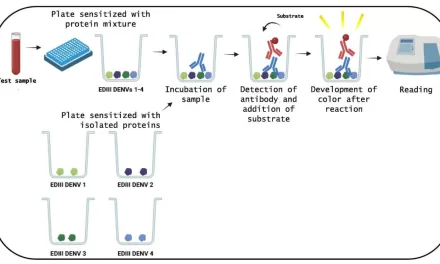February 7, 2024 — In a significant step towards revolutionizing heart valve replacement, researchers at Imperial College London and Harefield Hospital in the UK have developed a groundbreaking treatment that utilizes the body’s natural repair mechanisms to construct living heart valves. The results of their innovative approach, offering potential long-term solutions for heart valve replacements, were published in the journal Communications Biology.
Dr. Yuan-Tsan Tseng, a biomaterials scientist at the Imperial’s National Heart and Lung Institute and the Harefield Heart Science Center, explained the aim of their concept, stating, “The aim of the concept we’ve developed is to produce a living valve in the body, which would be able to grow with the patient.”
Traditional heart valve replacement methods, whether mechanical or biological, come with their own limitations. Mechanical valves require lifelong medication to prevent blood clotting, while biological valves typically last only 10 to 15 years. This poses challenges for children with congenital heart defects, as the valves do not grow with their bodies and necessitate multiple replacements before adulthood.
The new treatment involves a nanofibrous polymeric valve made from a biodegradable polymer scaffold, unlike the durable plastic used in conventional valves. Once implanted in the body, the scaffold recruits cells and guides their development, effectively turning the body into a bioreactor for growing new tissue. Over time, the scaffold degrades and is replaced by the body’s own tissues, ensuring long-term functionality.
Dr. Tseng highlighted the key innovation in the scaffold material, which attracts and instructs appropriate cells from the patient’s body, facilitating tissue generation and maintaining valve function.
In a trial involving sheep, the transplanted valves exhibited promising performance over six months, showing good cellular regeneration. The scaffold attracted cells from the bloodstream, which developed into functional tissues through a process known as endothelial-to-mesenchymal transformation (EndMT). Additionally, nerves and fatty tissues grew within the scaffold, mimicking the natural structure of a valve.
The gradual degradation of the polymer scaffold indicated successful tissue regeneration, ensuring the structural integrity and functionality of the valve over time.
Dr. Tseng emphasized that while more research is needed to understand the underlying processes and obtain regulatory approval for clinical trials, their approach holds immense promise for transforming heart valve replacement procedures in the future.
The development of living heart valves that grow inside the body represents a significant leap forward in cardiac care, offering hope for improved outcomes and long-lasting solutions for patients with heart valve defects.
Stay tuned for further updates as researchers continue to advance this groundbreaking technology.












